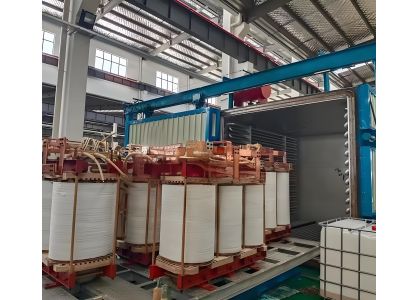
When considering electrical equipment, we often picture metal components and wires, with maybe a hint of insulation. However, a closer examination of transformers—critical devices in power transmission that adjust voltage levels—reveals that they are commonly wrapped in tape. This practice, particularly with fiberglass tape for electrical insulation, serves many crucial functions that enhance the safety, functionality, and longevity of transformers. In this blog ,we will try to find why filament tape, specifically fiberglass electrical tape, is essential for transformer applications, highlighting its unique properties and the various roles it plays in ensuring optimal performance.
One of the primary reasons for wrapping transformers in fiberglass tape for electrical insulation is to provide effective insulation. Electrical insulation is vital for preventing unintended contact between conductors, which can lead to short circuits or electrical arcing—events that can severely damage equipment and create hazardous situations. Fiberglass insulation tape excels in this regard due to its impressive dielectric properties, capable of withstanding electrical strength up to 5kV. This high level of insulation significantly minimizes the risk of electrical failures, protecting both the transformer and the surrounding environment.
Transformers are often installed outdoors, exposing them to various environmental factors like rain, dust, wind, and extreme temperatures. Fiberglass electrical tape, as part of the glass woven tapes family, provides a robust barrier against these elements. With a temperature resistance of up to 150°C, this tape ensures that transformers remain operational in harsh conditions. This protective layer not only shields internal components from moisture and particulates but also enhances the transformer's longevity, which in turn reduces maintenance costs and operational downtime.
In addition to its insulating properties, filament tape serves a crucial mechanical role. It secures windings and other components, providing essential structural integrity during both transport and operation. Transformers experience vibrations and physical impacts during their long operational lives, and if components are not adequately secured, it can lead to looseness or a shift that compromises performance. The strength and stability provided by high temp fiberglass insulation tape help mitigate these issues, ensuring reliable operation and safety and protecting the internal components from potential damage.
Compliance with electrical safety standards is crucial in many jurisdictions, requiring specific insulation materials and protective measures for electrical devices. By utilizing fiberglass electrical tape, manufacturers can meet these regulatory standards, thereby enhancing the overall safety and reliability of electrical systems. This compliance not only protects the end-users of the transformers but also contributes to the stability of the entire electrical grid, preventing accidents that can arise from equipment failures.
Color-coded tapes are sometimes used in transformer wrapping to signify different functions or warnings. This color-coding system can be extremely beneficial for maintenance personnel, allowing them to quickly identify specific circuits, voltage ratings, or potential hazards associated with the transformer. The visual identifiers provided by fibreglass insulation tape streamline troubleshooting processes and improve overall safety protocols, making it easier for technicians to carry out their tasks efficiently and safely.
While this article emphasizes fiberglass tape for electrical insulation, other types of insulation tapes also play significant roles in transformer applications:
· Cotton Tapes: Useful for lower temperature applications where flexibility is needed.
· Glass Woven Tapes: Offer excellent mechanical strength and heat resistance, making them suitable for high-temp settings.
· Polyester Resin Impregnated Tapes: Provide additional electrical insulation and mechanical stability.
· Nomex Paper Insulation Tapes: Known for their high thermal ratings, these help maintain performance in extreme conditions.
· Oil-Resistant Tapes: Essential for transformers that may encounter oil exposure, maintaining integrity in these environments.
Wrapping transformers in fiberglass tape for electrical insulation may seem like a minor detail in the complex landscape of electrical engineering, but its impact is substantial. Beyond the fundamental insulation it provides, filament tape also shields transformers from environmental factors, enhances mechanical support, ensures compliance with safety regulations, and aids in color-coded identification for safety and maintenance.
As technology advances, the materials and methods used for wrapping transformers may evolve, yet the importance of utilizing high-quality insulation like high temp fiberglass insulation tape will remain critical. Recognizing these essential functions underscores the role of fibreglass insulation tape in promoting safe and efficient operation within our electrical infrastructure. Next time you see a transformer wrapped in tape, you can appreciate the multitude of ways it contributes to the reliability and effectiveness of power distribution in our daily lives.